Making a thermal facade on Klimabloc with perlite and Ceresit plaster
| 10 August 2010 - Comments (0) | Construction |
 Klimabloc 38, that we use for external walls, has excellent thermal insulation characteristics by itself. It is nevertheless possible to further improve it by placing 4cm of thermal mortar on the external side of the wall. That is what we did on Amadeo II, using thermal mortar based on perlite. On top of the thermal mortar, we did a complete Henkel Ceresit facade system.
Klimabloc 38, that we use for external walls, has excellent thermal insulation characteristics by itself. It is nevertheless possible to further improve it by placing 4cm of thermal mortar on the external side of the wall. That is what we did on Amadeo II, using thermal mortar based on perlite. On top of the thermal mortar, we did a complete Henkel Ceresit facade system.
Thermal mortars
Thermal mortars are lightweight mortars made by mixing a lightweight material with cement and other additives. Thermal mortars come in bags as ready-mix and just need to be added water in a regular concrete mixer to be prepared. The mixture once dry can be sturdy but is very lightweight. In addition of being lightweight, thermal mortars provide a good insulation with a thermal conductivity, λ, usually around 0.1 W/mK.
Several types of thermal mortar exist, depending of the nature of the lightweight material that is used inside. That material can be : expanded polystyrene, expanded clay or perlite. Last year, on Amadeo, we used a thermal mortar based on expanded polystyrene. This year, on Amadeo II, we wanted to use a natural material and we opted for perlite.
Perlite thermal mortar
Perlite is a naturally occurring volcanic glass that is expanded in volume by an industrial process. Several types of thermal mortars are made from expanded perlite: for construction (joining blocks) and for facade. For the facade of Amadeo II, we chose Supermal from Termika.
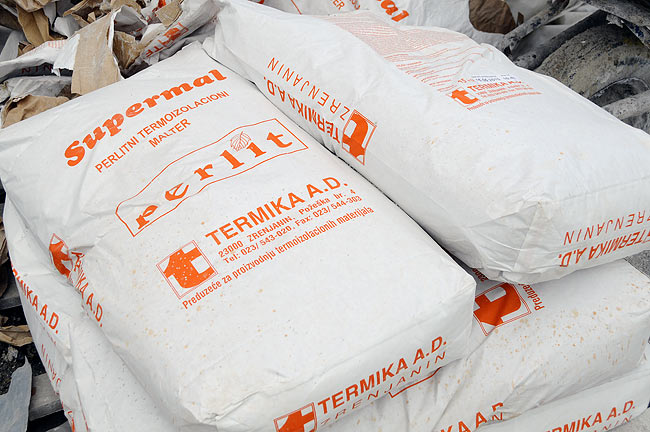
Bags of perlite mortar Termika Supermal on Amadeo II construction site (photo Beodom).
Applying perlite thermal mortar
Before to apply Supermal, a primer has to be passed on the walls to improve adherence. That primer was provided by Termika together with Supermal.

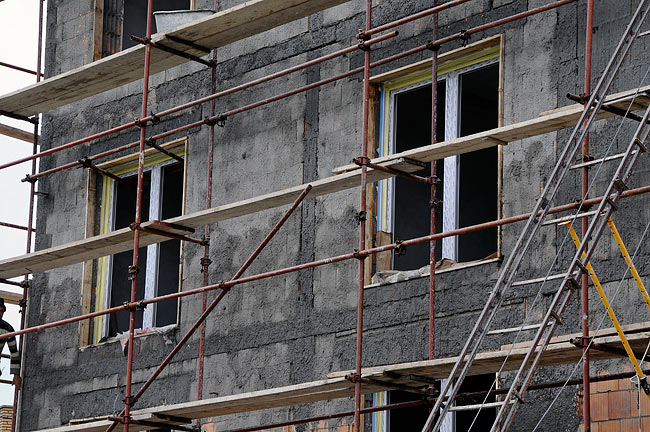
Primer for Supermal passed on part of Amadeo II facade (photo Beodom).
Supermal is prepared in a regular concrete mixer. Just water is added in the right proportion.
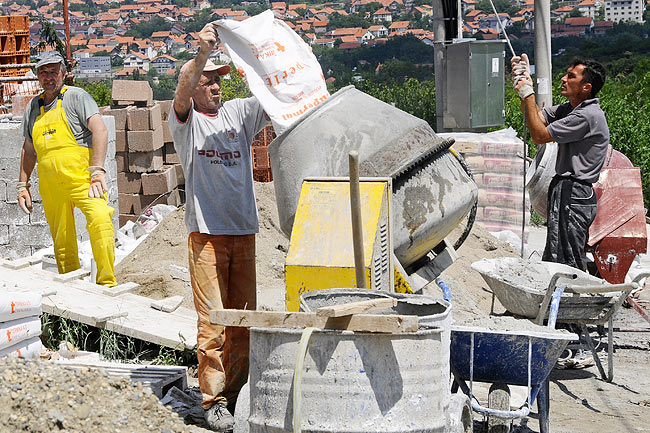
Mixing perlite in a concrete mixer (photo Beodom).
The perlite mortar is then applied manually on the facade. It is better to apply it manually because a machine application would compress it too much, increasing the amount of necessary material by 20%.


Working with perlite Termika Supermal on Amadeo II facade (photo Beodom).
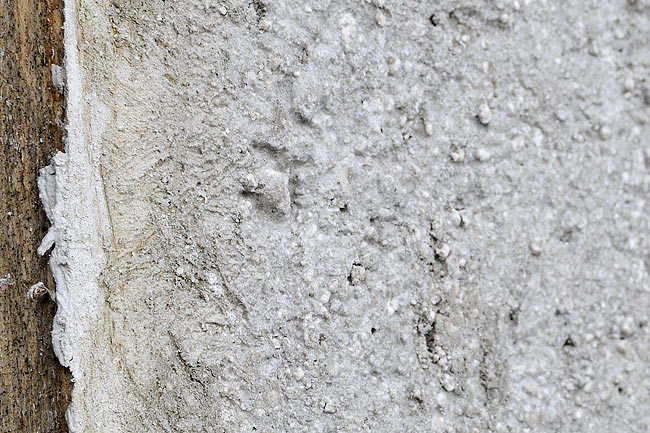
Closeup on Termika Supermal perlite mortar applied on the facade. The mortar is not dry and not yet smoothed. It is possible to see the small white perlite particles.
The result is sturdy and very good. Compared to thermal mortars based on expanded polystyrene, we can say that the result with perlite is more sturdy and its application easier.

Closeup on Termika Supermal perlite mortar applied on the facade once smoothed and dry.
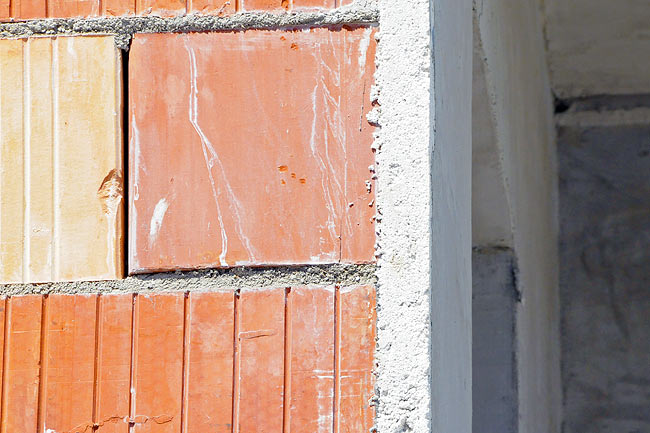
4cm of Termika Supermal, white like perlite (photo Beodom).
Perlite thermal mortar is also excellent to use on the sides of the windows. It makes a nice finish while attenuating thermal bridges around the window.
Interior walls
We also used the same perlite thermal mortar inside of the staircase, on the walls common with apartments. Common walls between staircase and apartments and made using Klimabloc 25. As the staircase is unheated space, it is very beneficial to improve their thermal insulation. So we apply the same 4cm of perlite thermal mortar on them, improving their thermal resistance by around 30%.
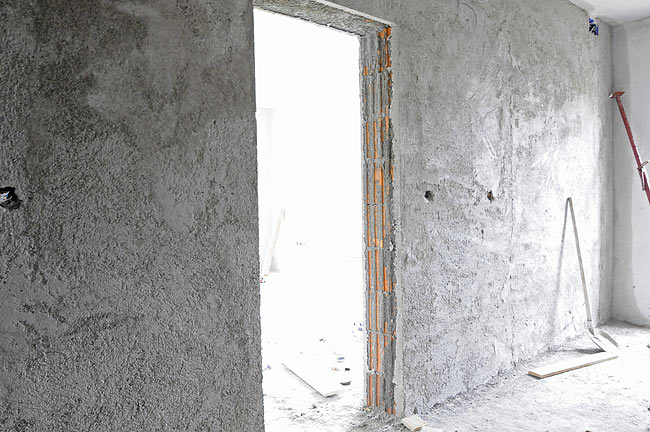
Perlite thermal mortar applied on the common wall between the staircase and one apartment (photo Beodom).
Reinforcing the perlite layer
As they are made with lightweight materials, thermal mortars are fairly porous and can crumble a little if scratched on the surface. It is therefore important to reinforce them. This is done with a reinforcement mesh and construction glue (in the same way as we explained before for cork).
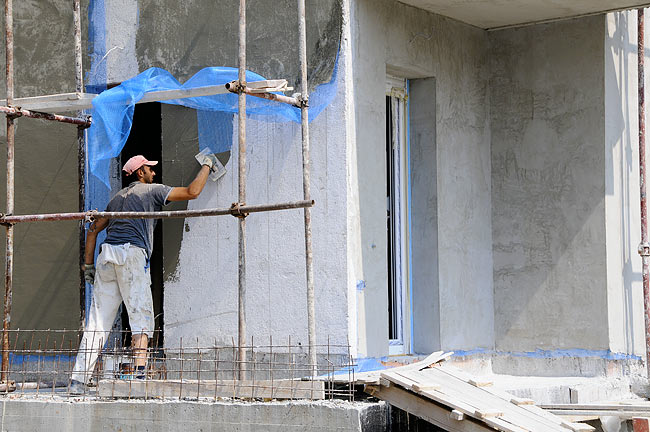
Passing the first layer of construction glue below the reinforcement mesh (photo Beodom).
We use Henkel Ceresit CT 83 for the construction glue. It goes in 2 layers. The first one on the perlite layer on which the reinforcement mesh is placed, and the second layer on top of the reinforcement mesh.
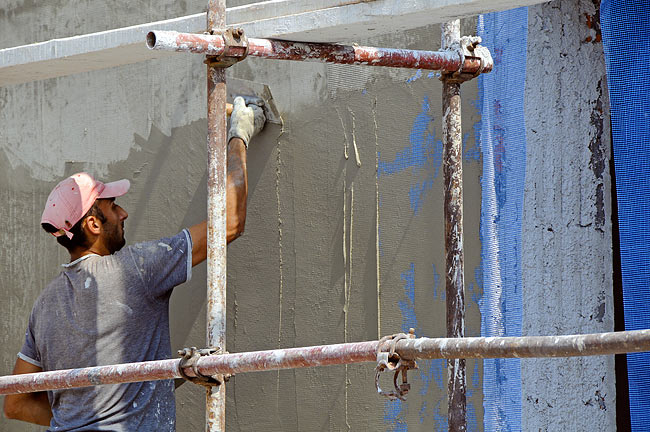
Passing the second layer of construction glue on top of the reinforcement mesh (photo Beodom).
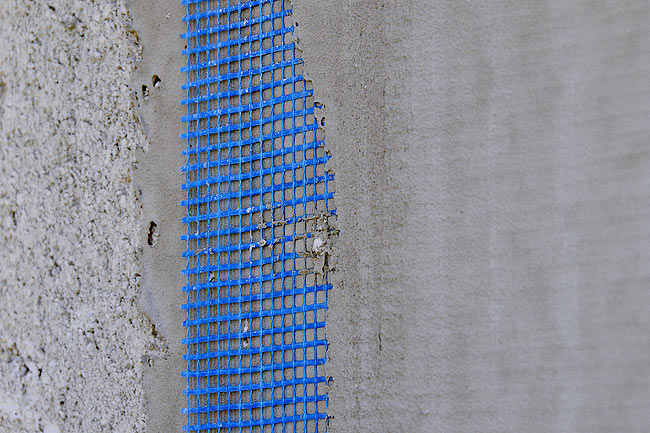
Closeup on the reinforcement of the perlite layer (photo Beodom).
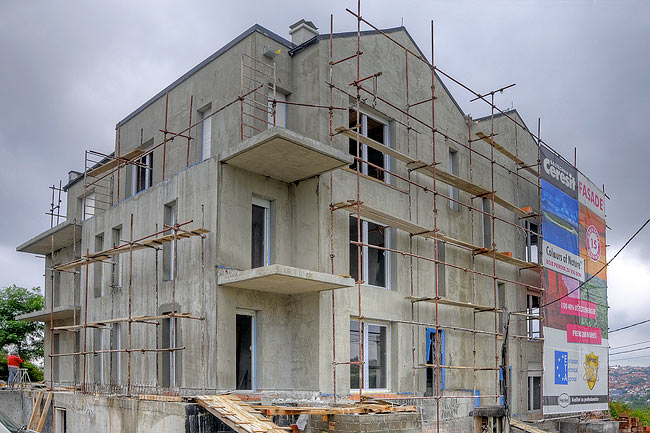
Amadeo II with the reinforcement of the perlite layer finished. Ready for Ceresit facade (photo Beodom).
Henkel Ceresit Facade : CT 16 primer
Ceresit CT 16 is a low viscosity and penetrative primer that can be applied easily with a roll. It also contains quartz grains that increase adhesion of the final coating.
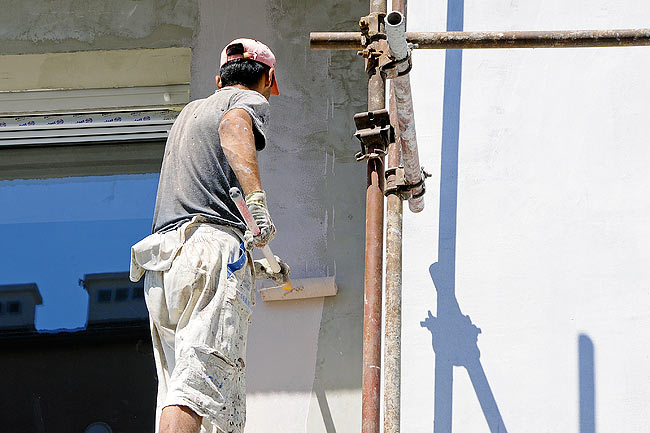
Applying Ceresit CT 16 primer on Amadeo II facade (photo Beodom).
In order to make the final facade rendering homogeneous, the primer comes in different colors, matching the color of the final layer.
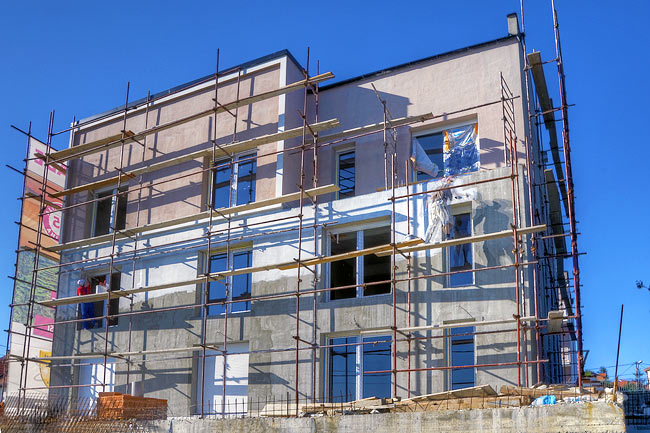
Progression of the application of Ceresit CT 16 primer on Amadeo II facade (photo Beodom).
Henkel Ceresit Facade : CT 174 silicone-silicate plaster
Ceresit CT 174 is an outdoor facade plaster with a very fine stone texture. It is vapor permeable (let the wall breathes) and hydrophobic. It is resistant to weather conditions, dirt and UV. It combines the best features of silicone and silicate plaster.
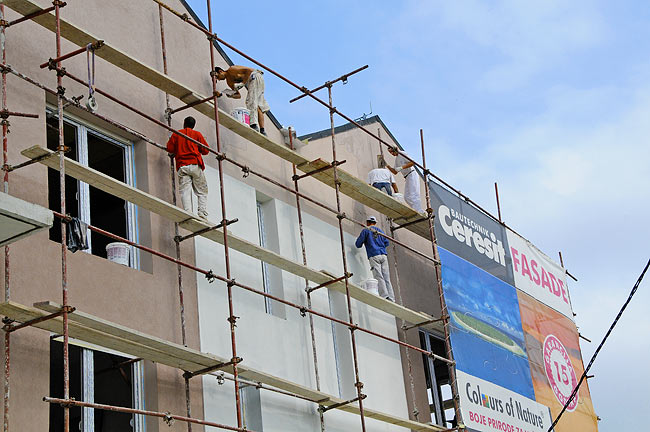
Applying Ceresit CT 174 plaster on Amadeo II facade (photo Beodom).
Ceresit CT 174 is applied with a stainless steel float and is given an homogeneous structure with round movements of the steel float.
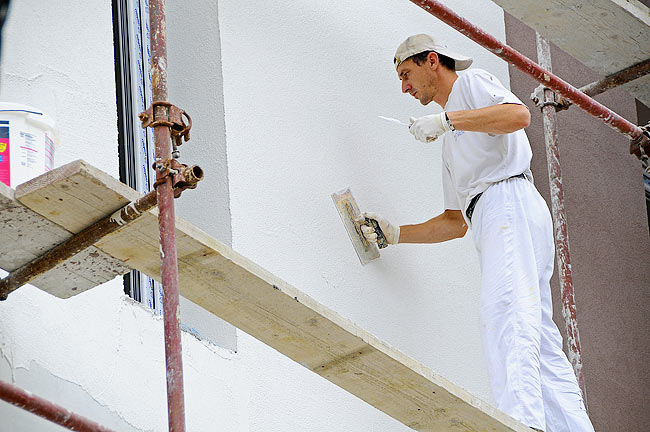
Spreading Ceresit CT 174 with a steel float (photo Beodom).
Each area of the facade has to be done at once to prevent any change of nuance. We had a team of 6 working together. Once the main area of the facade is done, details have to be done such as below balconies and around windows.
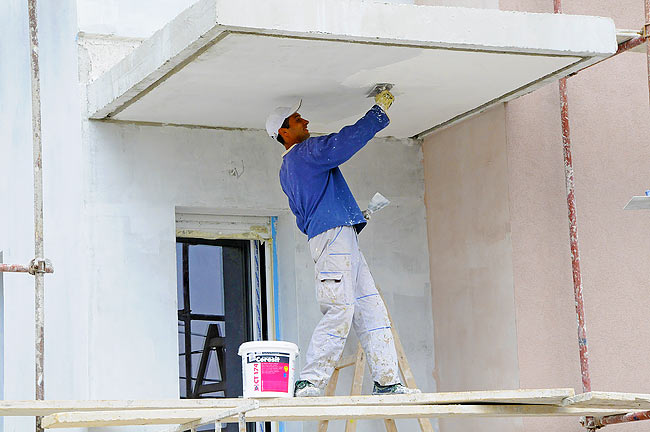
Applying Ceresit CT 174 plaster below balcony (photo Beodom).
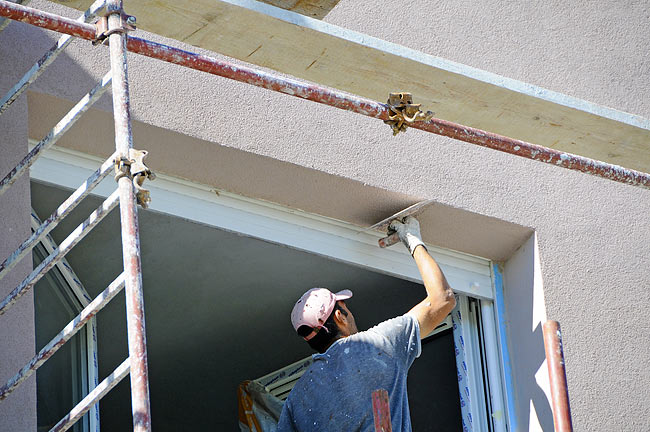
Applying Ceresit CT 174 plaster around windows (photo Beodom).
Ceresit plaster is available in many beautiful colors called Colors of Nature. For Amadeo II we used 3 of them in the Ground colors serie :
- Columbia 6 : dark brown
- Columbia 4 : light brown
- White
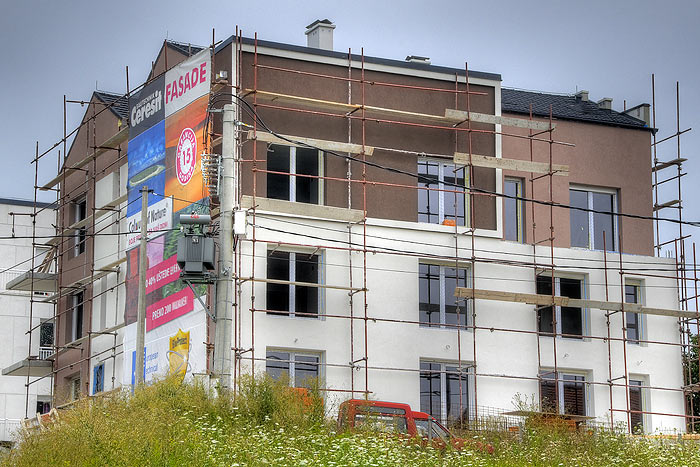
Amadeo II with the 3 colors we used (photo Beodom).
Final result
Here the final result without the scafolding.
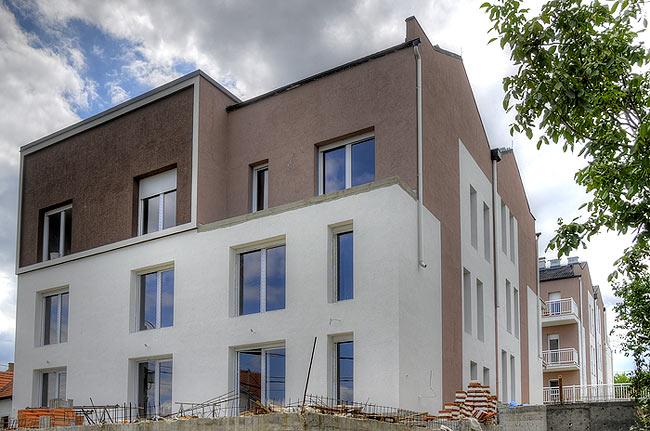
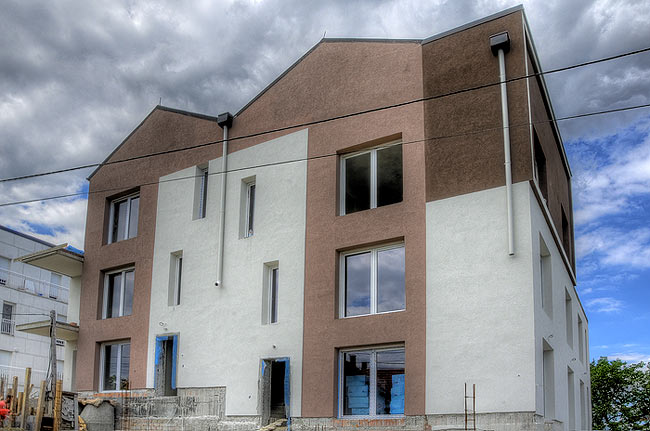

Amadeo II final result of the facade (photos Beodom).













 Making a thermal facade on Klimabloc with perlite and Ceresit plaster
Making a thermal facade on Klimabloc with perlite and Ceresit plaster






















